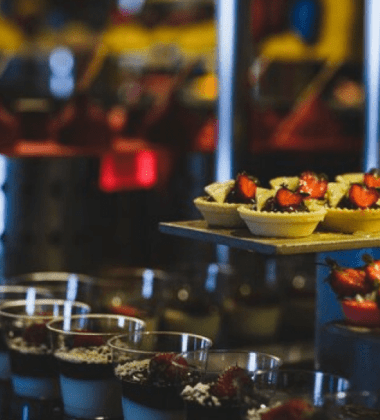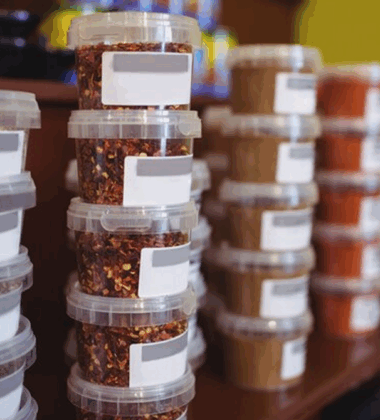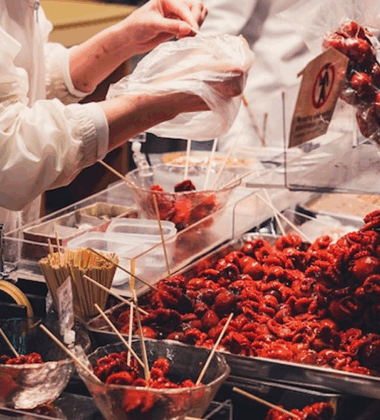Imagine a world where your favorite restaurant knows your order before you do, where food waste is a thing of the past, and where every bite is tailored to your unique nutritional needs. This isn’t science fiction—it’s the reality of the food industry today, thanks to the transformative power of Artificial Intelligence (AI) and data analytics.
From farm to fork, AI and data analytics are reshaping how we produce, distribute, and consume food. For industry professionals, these technologies aren’t just tools—they’re game-changers that can drive efficiency, sustainability, and profitability. In this educational deep dive, we’ll explore how AI and data analytics are revolutionizing the food industry and what it means for your business.
1. AI in Food Production: Smarter Farming
AI is transforming agriculture, making it more efficient and sustainable:
- Precision Farming: Use AI-powered sensors and drones to monitor crop health, soil conditions, and weather patterns in real time.
- Predictive Analytics: Forecast crop yields and optimize planting schedules to maximize output.
- Automated Machinery: Deploy AI-driven robots for tasks like planting, harvesting, and weeding, reducing labor costs and increasing precision.
Pro Tip: Implementing AI in farming can reduce resource use, improve yields, and create a more sustainable food system.
2. Supply Chain Optimization: From Farm to Table
AI and data analytics are streamlining the food supply chain:
- Demand Forecasting: Use predictive analytics to anticipate consumer demand and optimize inventory levels.
- Route Optimization: AI algorithms can determine the most efficient delivery routes, reducing transportation costs and emissions.
- Quality Control: AI-powered systems can detect defects or contamination in food products, ensuring safety and quality.
3. Personalized Nutrition: Tailored to You
AI is making personalized nutrition a reality:
- DNA-Based Diets: Analyze genetic data to create customized meal plans that meet individual health needs.
- Wearable Integration: Sync AI apps with wearable devices to track nutrition and provide real-time recommendations.
- Smart Kitchen Appliances: Use AI-powered gadgets to prepare meals tailored to your dietary preferences and restrictions.
4. Food Safety and Traceability
AI and data analytics are enhancing food safety and transparency:
- Blockchain Technology: Track food from farm to table, ensuring transparency and reducing the risk of contamination.
- Real-Time Monitoring: Use AI sensors to monitor storage conditions and detect spoilage before it becomes a problem.
- Predictive Alerts: AI systems can predict and alert suppliers to potential safety issues, preventing recalls and protecting consumers.
5. Reducing Food Waste
AI is tackling one of the food industry’s biggest challenges:
- Smart Inventory Management: Use AI to track expiration dates and optimize stock levels, reducing waste.
- Dynamic Pricing: AI algorithms can adjust prices in real time to sell perishable items before they spoil.
- Food Recovery Apps: Platforms like Too Good To Go use AI to connect consumers with surplus food from restaurants and retailers.
6. Enhancing Customer Experience
AI is revolutionizing how consumers interact with food brands:
- Personalized Recommendations: Use AI to suggest products based on past purchases and preferences.
- Voice-Activated Assistants: Integrate with devices like Alexa or Google Home to make meal planning and grocery shopping seamless.
- Virtual Chefs: AI-powered apps can generate recipes based on the ingredients you have at home.
7. Innovative Product Development
AI is driving creativity in the food industry:
- Flavor Profiling: Use AI to analyze consumer preferences and create new, innovative flavors.
- Recipe Optimization: AI can test and refine recipes to improve taste, texture, and nutritional value.
- Market Analysis: Data analytics can identify emerging trends and inform product development strategies.
8. Sustainability and Ethical Sourcing
AI is helping the food industry become more sustainable:
- Carbon Footprint Tracking: Use AI to measure and reduce the environmental impact of food production and distribution.
- Ethical Sourcing: Data analytics can ensure suppliers meet sustainability and labor standards.
- Circular Economy: AI can optimize processes to minimize waste and maximize resource efficiency.
9. Challenges and Opportunities
While AI and data analytics offer immense potential, they also come with challenges:
- Data Privacy: Protecting consumer data is critical to building trust and complying with regulations.
- Implementation Costs: Investing in AI technology can be expensive, but the long-term benefits often outweigh the costs.
- Workforce Training: Employees need to be trained to use AI tools effectively, which requires time and resources.
10. The Future of Food is AI-Driven
The integration of AI and data analytics into the food industry is just beginning. As these technologies continue to evolve, they will unlock new possibilities for innovation, sustainability, and growth.
Ready to embrace the future of food? Join us at the Global Products Expo from June 26–28, 2025, at the New Jersey Expo Center, where the latest in AI and data analytics takes center stage. Don’t miss out—register today and be part of the revolution!
The future of food is smart, sustainable, and full of opportunity. See you at the expo, where innovation meets flavor!





